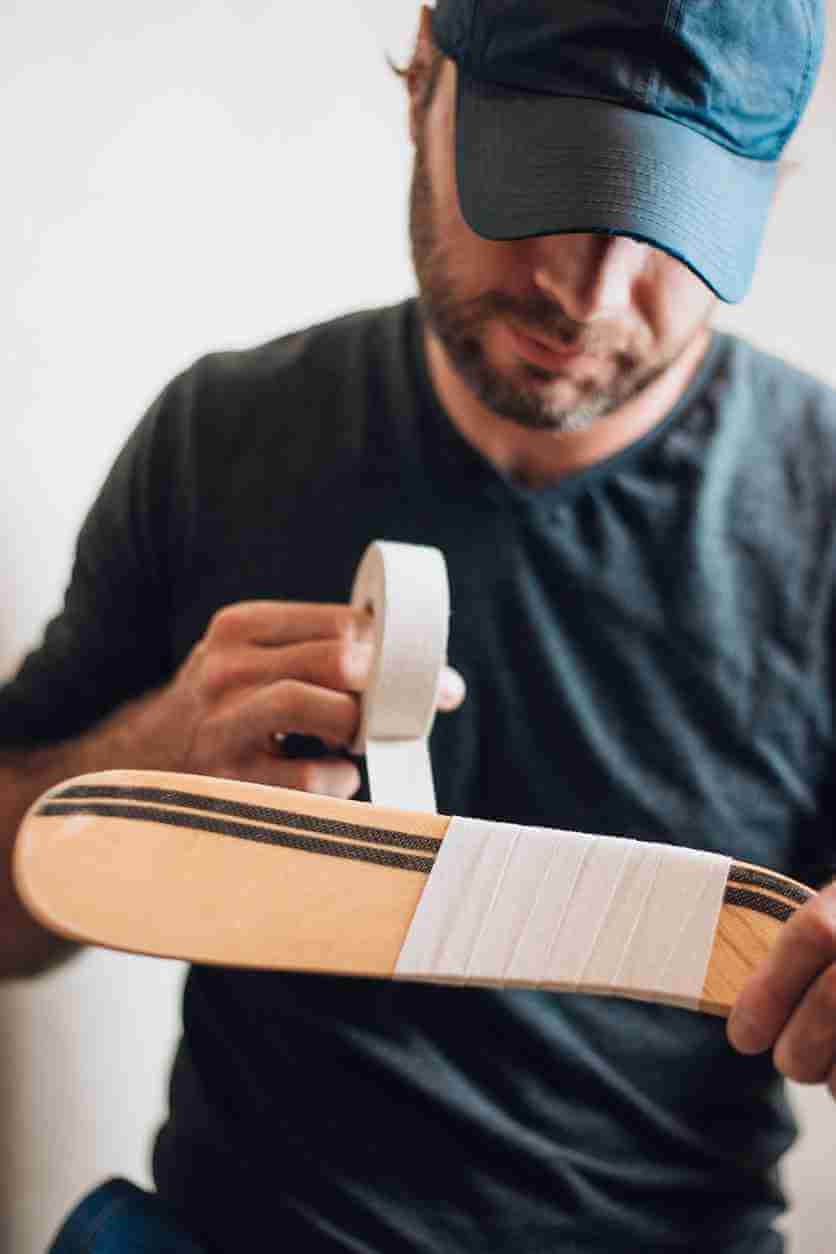Hockey Stick Taping Styles & Trends
01 17 2025
No two hockey players are the same — not even the Sedin brothers. Different styles of play call for gear that fits players like they were born with it, and that means a lot of trial and error and careful consideration. When it comes to finding the ideal stick, knowing how to choose one made with the proper level of flex and curve is certainly critical, but that's not the whole story. This is where a good roll of hockey tape becomes the MVP.
Taping your stick enables you to customize the feel and performance of your twig so you can feel as comfortable and confident on the ice as possible. Made from durable fabric with strong adhesive, hockey tape helps protect your equipment as well as boosting your game. Not only does it keep ice and moisture from building up and harming the stick, but it also gives you more control of the puck along with other benefits. For example, many forwards choose to use black tape on the blades of their sticks because it helps camouflage the puck from the goalie and gives them a slight advantage when attacking the crease.

There are almost as many ways to tape your stick as there are players, so it's a good idea to play around with different taping styles to find the one that feels right for you. If you're new to the sport, our guide on the basic method of taping a hockey stick should be your starting point. Once you master the standard methods, however, it's time to move on to some more-advanced ways to tape your hockey stick.
There’s No “Right” Way to Tape a Stick
Because how you tape your stick depends on how you want it to affect your play, there's no “right” way to tape. However, you should be aware of how taping influences how your stick feels and how it interacts with the puck if you want to get the best results. Taping the blade and the shaft can have different effects, depending on how you do it. In general, the different taping techniques can influence:
- Control: Having tape in the right places along the handle and shaft of your stick can change the way it feels in your hands, as well as its responsiveness. This can be critical for ensuring you always have a firm grip so your stick will respond the way you expect it to.
- Feel: Taping the blade can influence how it feels when you're handling the puck. Some players like having a thick layer of tape to prevent the puck from bouncing off the blade, while others prefer just enough to provide friction without losing sensitivity.
- Accuracy: When you're able to tape your blade without overlaps or gaps, it creates a smooth, consistent surface for delivering shots. This means there's less chance of a wobbly shot fluttering to the wrong side of the pipes.

Hockey Stick Grip Tape Styles
Although most sticks manufactured today come equipped with grips already installed at the handle, a lot of players still prefer to customize theirs with a bit of tape. Most often, players will use it to build up the knob on the butt end so they can get a better grip on it when poke checking or taking a slap shot.
For many players, the best way to add some additional grip to their sticks is what's known as the “candy cane” tape job in hockey. This involves using a long piece of rolled tape and wrapping it around the shaft, ensuring there are gaps a gloved finger's width between each wrap. This creates finger wells that give you something to hold onto firmly without worrying about the stick sliding through your hands.
Of course, you may not want a lot of extra stickiness on your stick because you prefer to be able to move your hands quickly during play. Again, there's no wrong way to tape a stick — how much or how little you use is up to you.
Hockey Blade Tape Styles
Where taping becomes really interesting is when you move down to the blade of your stick. There are a number of different styles some players swear by, and in general there are four main techniques. For reference, the heel refers to the point where the blade curves away from the shaft, and the toe refers to the rounded end of the blade.
- Classic: Starting at the heel and ending at the toe, this method tapes most of the blade, leaving only a small amount uncovered at each end. This tends to provide more grip when you're passing or shooting.
- Sock: This involves taping the entire blade from the start of the heel to the end of the toe, making it look like you have a sock covering the end of your stick.
- Toe: Players who don't want to cover their entire blade usually start at the midpoint of the blade and tape down to the end of the toe. This means the puck will slide down the blade faster for a quicker wrist shot, but that comes with a loss of control when taking a slap shot or catching a pass.
- Five-Strand: If you don't want to spend a lot of time taping your blade, this method starts a little closer to the toe than mid-blade, with five wraps around it until you reach the toe.
Once the tape is applied, many players like to apply some stick wax over the taped area of the blade. This enhances the resistance to ice and moisture while ensuring the integrity of the tape for as long as possible.
Common Mistakes to Avoid When Taping
Getting the best results from your tape job means being careful to avoid some of the most common mistakes players make, including:
- Using too much tape: Usually there's no need to wrap the entire shaft of your stick with tape. You'll just end up burning through your roll that much faster — and maybe get some weird looks in the locker room.
- Not using hockey tape: Hockey tape is made specifically for improving the grip of your stick. Other tapes like masking tape, duct tape and packing tape won't offer the same type of surface and may even damage your stick.
- Being sloppy: If you overlap the tape or apply it with wrinkles, it can create an uneven surface that results in wonky shots or passes. Make sure you apply it evenly and carefully so there are no weird spots.
Tips for Maintaining Taped Sticks
A good tape job is worth saving, which is why you should make sure you follow best practices for keeping your taped sticks in good condition:
- Use quality tape: First and foremost, make sure you're buying high-quality tape that will stand up to the rigors of play.
- Store sticks in a dry place: This prevents moisture from collecting in the tape and contributing to deterioration.
- Replace worn tape ASAP: If you see tape that's frayed, peeling or starting to lose its tackiness, replace it as soon as you can.
- Clean your stick before taping: Cleaning your stick before taping helps it stick more effectively and ensures it will last longer.
With a little care and attention, you can keep your taped sticks in prime condition for as long as possible.
Get Creative and Have Fun!
Maybe the best advice you could get about finding the right hockey tape styles for you is this: Hit the ice! The more you play, the more you'll learn about what's fun for you and what feels most natural. Once you have that figured out, the right way to tape your stick will come to you as naturally as lacing up your skates. Here at ProStockHockey.com, we have a wide range of sticks sourced straight from pro locker rooms. We even include a few rolls of tape so you can start experimenting on the best way to tape your hockey stick right away! Get in touch with us today to start shopping and learn more.
